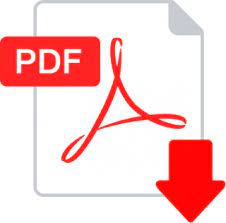Kepribadian, Ketidaksadaran Kajian Kepribadian Ketidaksadaran Kolektif Tokoh Tooru Dalam Film Ai Uta: Yakusoku No Nakuhito Karya Taisuke Kawamura
Kajian Kepribadian Ketidaksadaran Kolektif Tokoh Tooru Dalam Film Ai Uta: Yakusoku no Nakuhito
DOI:
https://doi.org/10.34010/js.v13i1.7814Abstract
Abstract
This article aims to explain the personality-forming factors of Tooru’s character based on one of the personality structures, namely collective unconscious containing two archetypes in the film Ai Uta: Yakusoku no Nakuhito. the data collection technique was done by listening and rcording the dialogue between characters. The data analysis technique is done by classifying the data in the form of dialogue and expressions between characters. Informal methods are used to present the results of data analysis. The theory used is Carl Gustav Jung’s psychoanalytic theory. From the results of the study through the two data found, it describes that Tooru character experiences shadow archetypes when scolding Tatsuya, and persona archetypes whwn trying to calm his mother and himself.
Keywords: Personality; collective unconscious; film
Abstrak
Penelitian ini, bertujuan untuk menjelaskan faktor pembentuk kepribadian tokoh Tooru berdasarkan struktur kepribadian ketidaksadaran kolektif yang memuat dua arketip yang terdapat dalam film Ai Uta: Yakusoku no Nakuhito. Teknik pengumpulan data dilakukan dengan cara menyimak dan mencatat dialog antar tokoh. Teknik analisis data dilakukan dengan mengklasifikasikan data berupa dialog dan ekspresi antar tokoh. Metode informal digunakan untuk menyajikan hasil analisis data. Teori yang digunakan adalah psiko analitik milik Carl Gustav Jung. Dari hasil penelitian melalui dua data yang ditemukan, mendeskripsikan bahwa tokoh Tooru mengalami arketip shadow (bayangan) ketika memarahi Tatsuya, dan arketip persona ketika berusaha menenangkan ibunya dan dirinya sendiri.
Kata Kunci: Film; kepribadian;ketidaksadaran kolektif
Downloads
Published
Issue
Section
License
- Authors retain copyright and grant the journal right of first publication with the work simultaneously licensed under a Creative Commons Attribution License that allows others to share the work with an acknowledgement of the work's authorship and initial publication in this journal.
- Authors are able to enter into separate, additional contractual arrangements for the non-exclusive distribution of the journal's published version of the work (e.g., post it to an institutional repository or publish it in a book), with an acknowledgement of its initial publication in this journal.
- Authors are permitted and encouraged to post their work online (e.g., in institutional repositories or on their website) prior to and during the submission process, as it can lead to productive exchanges, as well as earlier and greater citation of published work (See The Effect of Open Access)










.jpg)

